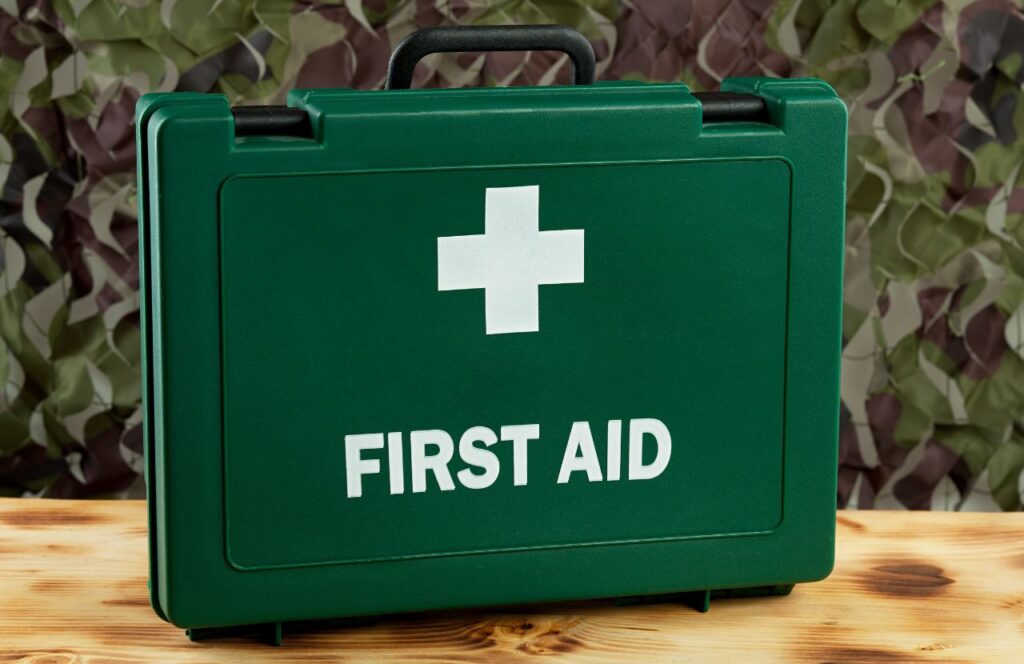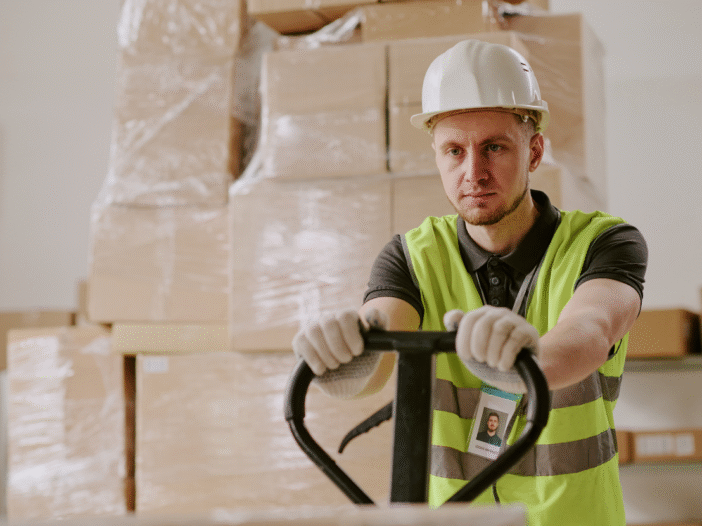
To best protect your employees in the workplace, having first aiders on hand who can manage injuries and illnesses is a good idea and a legal requirement under The Health and Safety (First-Aid) Regulations 1981.
But answering the question, “How many first aiders do I need?” can be tricky. This is because the number of first aiders your workplace requires depends on the demands of your workplace and the work your employees do.
If a workplace does not have an adequate number of first aiders, they risk endangering the lives of employees and visitors and breaking the law.
What is a first aider at work?
A first aider is somebody who has received training in providing immediate, basic medical assistance to people who are injured or ill. The responsibilities of a first aider vary depending on the circumstances and the level of training they have received.
A first aider at work is typically an employee who volunteers and not a dedicated healthcare professional.
As stated in The Health and Safety (First-Aid) Regulations 1981, employers have a legal responsibility to ensure the health and safety of their employees, including appointing first aiders.
First aid at work
Although the term “first aider” is broadly used, there are several first aid roles, all with different associated tasks.
Appointed person – an individual who is in charge of first aid arrangements. This includes looking after the equipment, facilities and calling the emergency services. There can be more than one, depending on an organisation’s needs.
Emergency first aiders – an emergency first aider has completed Emergency First Aid at Work (EFAW) training to recognise, diagnose and treat injuries. They provide adequate emergency first-aid and aim to prevent the situation from escalating as they wait for emergency services.
First aiders – first aiders have completed EFAW and the additional qualification, First Aid at Work (FAW). This means they have the skills and knowledge to treat a broader range of injuries and illnesses.
How many first aiders do I need to meet legal requirements?
The number of first aiders your organisation requires depends on several factors, including the total number of employees and if the work and workplace are high or low risk.
However, the Health and Safety Executive suggest minimums for specific industries, related to the degree of risk. For example, for the construction industry at least one first aider trained in EFAW or FAW is recommended for every 5-50 employees.
Ultimately, the number of first aiders an organisation decides on will be down to judgement. To calculate how many first aiders you require for your organisation, it is advisable to carry out a first aid needs assessment.
Carrying out first aid assessments
A first aid assessment is designed to help you calculate the appropriate number of first aiders required for your organisation’s workplace to protect your employees and others and remain compliant with government legislation.
When carrying out first aid assessments, there are several factors to consider, including:
- The number of employees.
- The number of lone workers.
- Work undertaken away from an employer’s workplace.
- The layout of the workspace.
- Hours of work and shifts.
- Any employees with disabilities or health problems.
- If the work is high or low risk.
- Any hazards or risks specific to your organisation’s work or at places that are visited.
For example, when carrying out a first aid assessment in a warehouse with potentially dangerous machinery present, the use of the machinery and any potential risks they pose to employees would need to be included. But this would not be the case if you were conducting a risk assessment in a small café.
However, in a low-risk hospitality environment like a café, hazards such as boiling water and hot food preparation equipment would need to be included in first aid assessments, compared to a similar-sized office environment.

First aiders in different work locations
High-risk workplaces
A high-risk workplace is any workplace that involves activities that have an increased risk of harm, such as handling chemicals or heavy materials and dangerous machinery. This type of workplace can include:
- Construction sites.
- Factories.
- Mines.
- Warehouses.
The suggested number of first aiders required for high-risk workplaces like these is one first aider for every 25 people.
Low-risk workplaces
Compared to high-risk workplaces, low-risk workplaces have little risk of causing harm or serious injury to employees. Low-risk workplaces can include:
- Cafés.
- Offices.
- Shops.
In a low-risk workplace, the minimum suggested requirement is one first aider for every 50 people.
First aid training
For first aiders to be effective in their role they need correct and appropriate knowledge. The training required for an appointed person, for example, is different to that required by an emergency first aider or a first aider.
First aiders and emergency first aiders must be able to carry out the same tasks as an appointed person, but in addition be able to identify and diagnose injuries and illnesses and administer appropriate aid until the emergency services arrive.
Several institutions provide first aid training, including government-recognised Voluntary Aid Services such as St John’s Ambulance.
HSE recommends that first aiders undergo annual first aid retraining to maintain the skills and knowledge required for their roles.
First aid appointed person training
Praxis42’s IOSH Approved First Aid Appointed Persons training course is a compact, comprehensive eLearning course designed to provide appointed persons with an understanding of their responsibilities, enabling them to apply first aid principles and make the best decisions.
This training course can be completed at an employee’s own pace and is suitable for organisations of any size in any industry.

Adam Clarke
Managing Director (Consulting)
